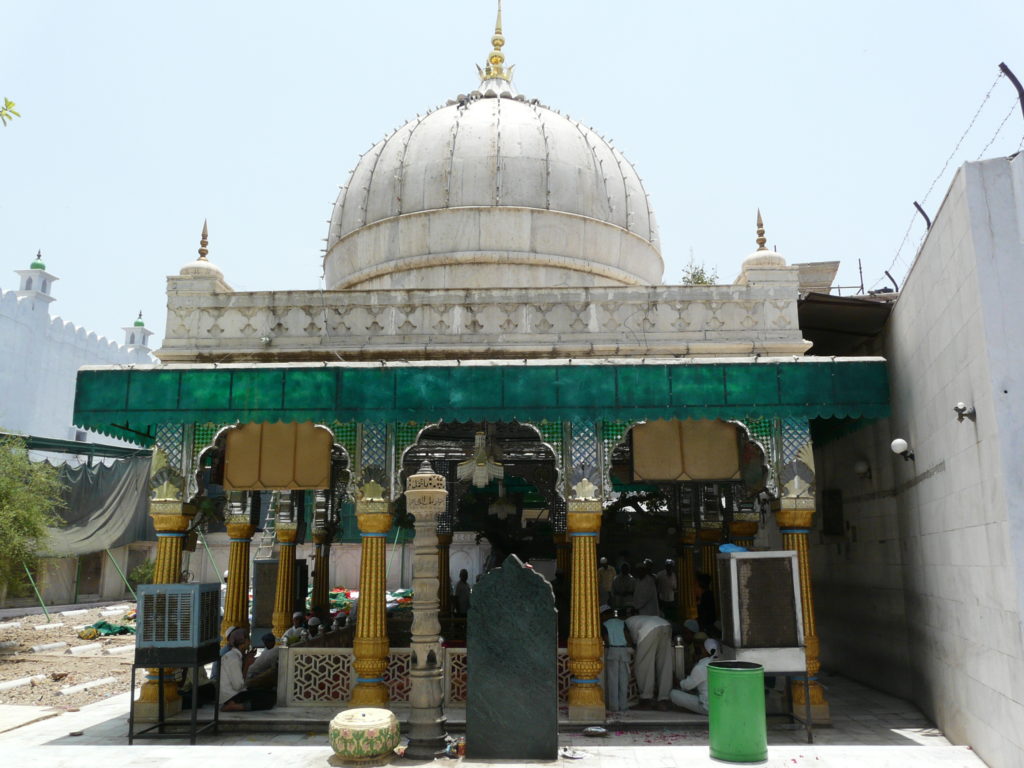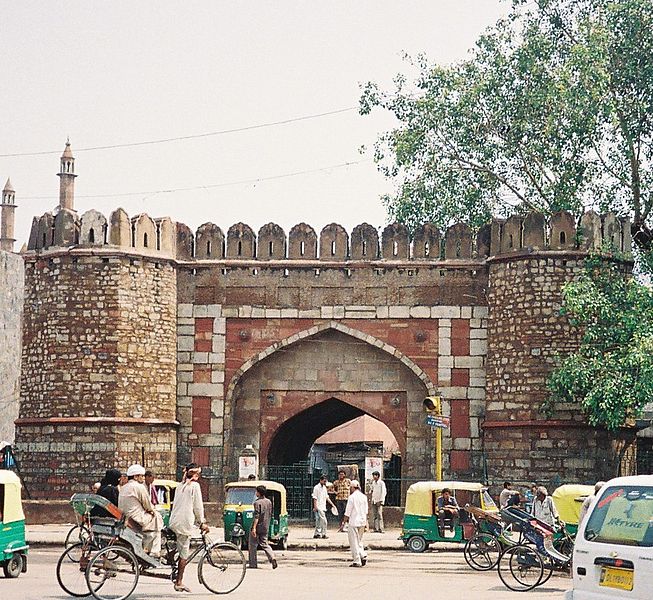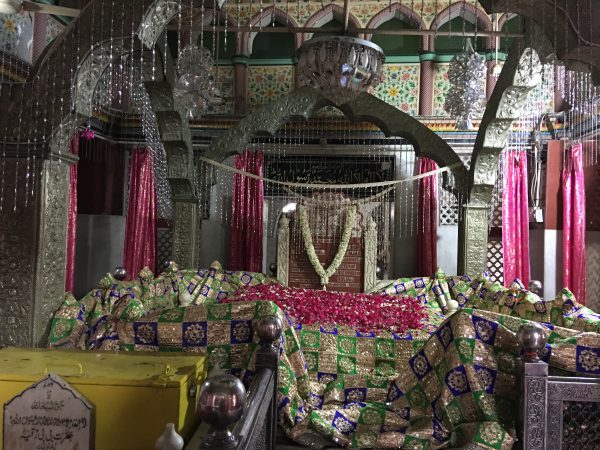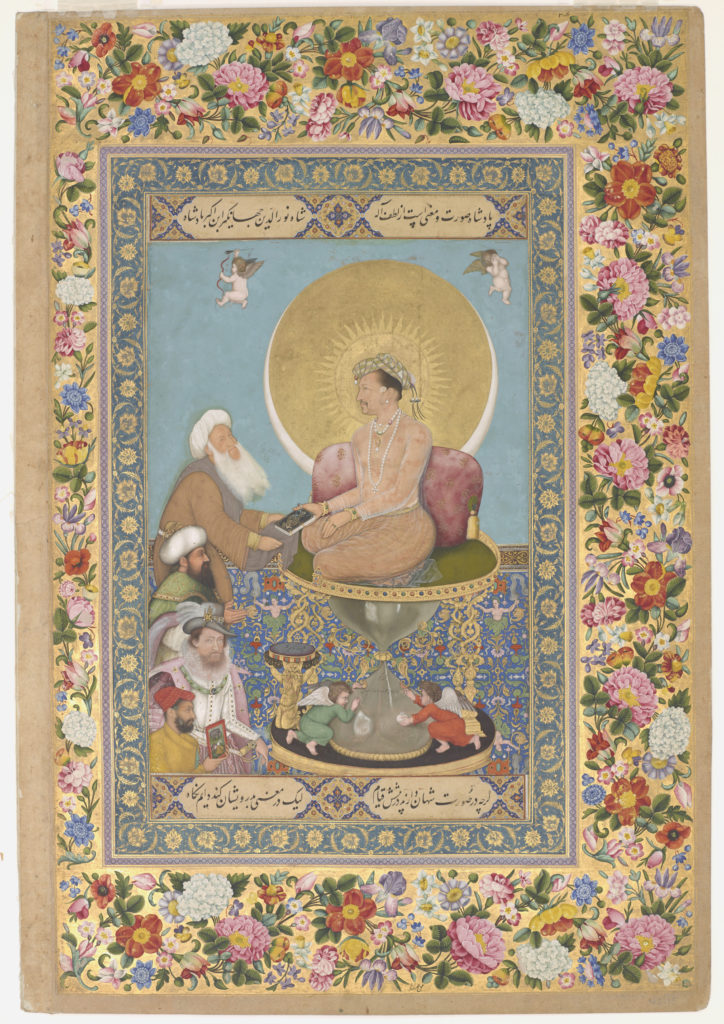
‘Jahangir Preferring a Sufi Shaikh to Kings’ from the St. Petersburg Album, courtesy Freer Gallery of Art and Arthur M. Sackler Gallery
Sadia Dehlvi’s book The Sufi Courtyard: Dargahs of Delhi begins with these lines by the poet Amir Khusrau:
Delhi, the protector of faith and of the world!
It is a garden of paradise—and so, may it flourish!
At the time Khusrau wrote this, Delhi was one of the major centres of Sufism in the world. People of all faiths found shelter and spiritual solace at the city’s many khanqahs or retreats run by Sufis, who believed that the route to divinity was through introspection and the dissolving of the self or the ego in the aura of God. Sufism is the mystical component of Islam and its ideology is derived directly from the teachings of Prophet Mohammed. There are several orders within the ambit of Sufism and many of the prominent pirs in the subcontinent belonged to the Chishti school, which originated in present-day Afghanistan and was brought to India when its adherents migrated here to escape persecution from the Mongols in the 13th and 14th centuries. Delhi was where many of them settled and under the reign of first the Sultanate kings and then the Mughals, they practiced and popularised a faith rooted in the principles of love, compassion and openness.
In the introduction to her book, Dehlvi explains why she doesn’t refer to the spiritual leaders of Sufism as saints: “I have deliberately refrained from the modern trend of using the words ‘saint’ and ‘shrine’ to define Sufis and their dargahs because they do not fit the Islamic context. While Sufis, like saints, are believed to be capable of interceding with God on behalf of their followers, the concept of sainthood remains exclusive to Christianity.” She goes on to elaborate that unlike Christian saints, Sufis were not required to demonstrate the power to work miracles—what was required was a “pious, virtuous life spent in the way of God”. And unlike temples and shrines that typically contain holy relics or idols, dargahs (meaning ‘doors of the court’) are the homes of the Sufis.
Here are a few Sufis who made Delhi home and whose legacy is still nourished by the city’s believers.
Qutbuddin Bakhtiyar Kaki (1173-1235)
The first dargah in Delhi was established by Qutbuddin Bakhtiyar Kaki, a Sufi from Fergana (present-day Uzbekistan) who was equally loved by kings and commoners. He arrived in the city on the advice of his teacher, the revered Ajmeri saint Hazrat Moinuddin Chishti, to spread the message of Sufism. It’s believed that the Qutb Minar was named by Sultan Iltutmish after his favourite Sufi rather than for the Minar’s actual founder, Qutb Al-Din Aibak. Qutbuddin Bakhtiyar Kaki’s dargah in Mehrauli is the destination of a charming annual procession called Phoolwaalon ki Sair. A tradition that began in 1812 under the reign of Akbar Shah II, the flower-laden, multi-faith procession winds its way from Chandni Chowk and halts to offer a ceremonial fan at the Yogmaya Temple before finally paying its respects to Delhi’s oldest Sufi.
Hazrat Shah Turkman Bayabani
A contemporary of Qutbuddin Bakhtiyar Kaki, this Sufi belonged to the Bayabani order whose followers were required to live in isolation and in the densest wilderness. RV Smith, author of The Delhi That No One Knows, wrote in the Deccan Herald: “… he did not live in Mehrauli where the new rulers had taken up abode. In those days, this area (Daryaganj) was a jungle where roamed many wild beasts, but this man of God did not have anything to fear. His needs were simple and he ate wild fruits and drank water from the pond that occupied the place where the Ramlila Ground is now situated.” Consequently, he was not as well known, even though Bayabani counted among his devotees such royalty as Razia Sultana, the only woman to rule the Delhi Sultanate. There’s a theory that Turkman Gate, the Delhi landmark that is meant to mark the Sufi’s grave might not even be the real location of his final resting place.
Muhammad Nizamuddin Auliya (1238 – 1325)
Auliya meaning ‘friend of Allah’ is a term attached to many Sufis but the personality most synonymous with that title is Hazrat Nizamuddin, for whom a whole neighbourhood is named in Delhi. A Sufi of tremendous influence, Nizamuddin counts among his successors such luminaries like Naseeruddin Chirag-e-Dehlvi and Amir Khusrau. His dargah welcomed everyone and hosted a particular kind of Sufi ceremony called Sama, where worship of the almighty takes the form of singing, dancing and making music. The form most closely associated with Nizamuddin is the qawwali, which is still performed for the thousands of pilgrims who gather at his dargah every day. It was believed that being buried near a Sufi granted one an auspicious start to the afterlife, so the Nizamuddin Dargah complex also contains the tombs of Mughal royalty, like Princess Jahanara and Muhammad Shah Rangeela.
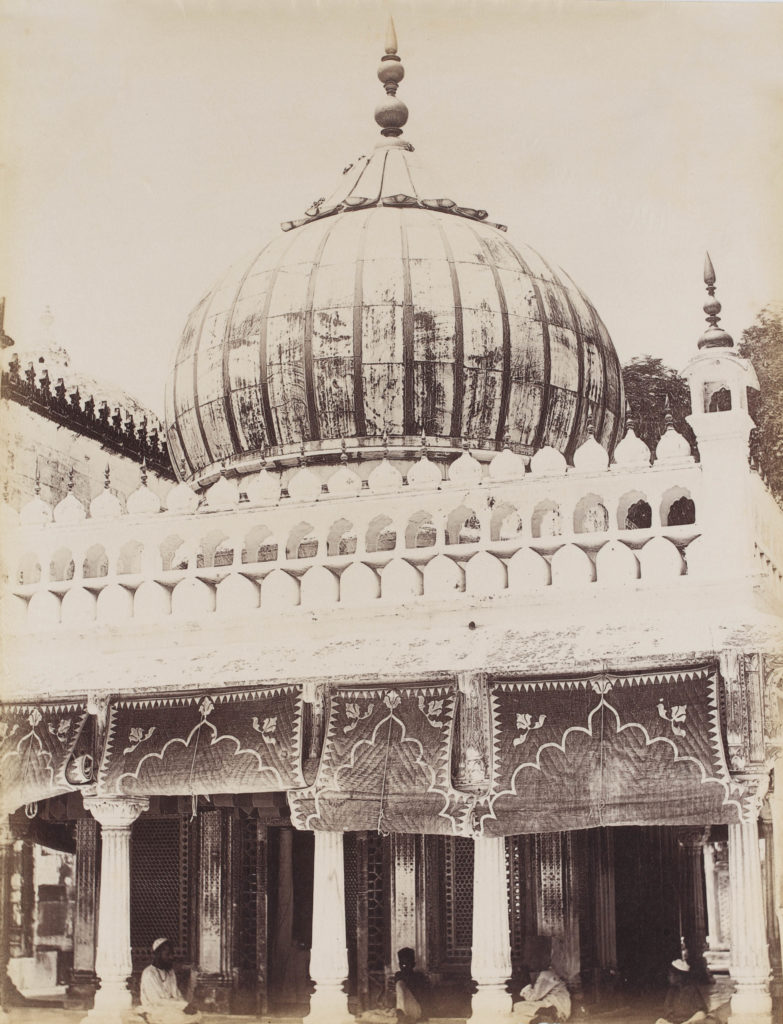
Nizamuddin Dargah, a photograph from the Sarmaya collection
Women Sufis
As journalist and photographer Mayank Austen Soofi notes in this blog, most dargahs limit entry to their innermost sanctum for women. There are a few notable exceptions, like the tomb of Bibi Fatima Sam. Believed to be the adopted sister of Baba Farid, Hazrat Nizamuddin’s pir or spiritual master, Bibi Fatima is buried in Kaka Nagar and her shrine is open all day to everyone—read more here. Another such is the dargah of Bibi Zulekha or Mai Sahiba, Nizamuddin’s mother, and her daughter Bibi Jannat at Adhchini village.
Naseeruddin Chirag-e-Dehlvi (1274-1356)
The last of the great Chishti Sufis of Delhi, Naseeruddin Chirag-e-Dehlvi was the mureed or disciple of Nizamuddin Auliya. Although in his 40s when he moved to Delhi from Ayodhya, he proved himself worthy of the mantle passed on by his pir and came to be known lovingly as Chirag-i-Delhi or ‘Lamp of Delhi’. There’s an interesting story about how he earned that moniker. Legend has it that when the Sultan of Delhi Ghiyasuddin Tughlaq tried to sabotage the construction of a well for Nizamuddin Auliya by prohibiting the sale of lamp oil to the workers, Chirag-e-Dehlvi performed a miracle by turning water into oil for all the lamps so the baoli could be built. His dargah lends its name to the village of Chirag Delhi, and it’s a quiet and peaceful complex that was built up over time by the Tughlaq and Lodi dynasties.
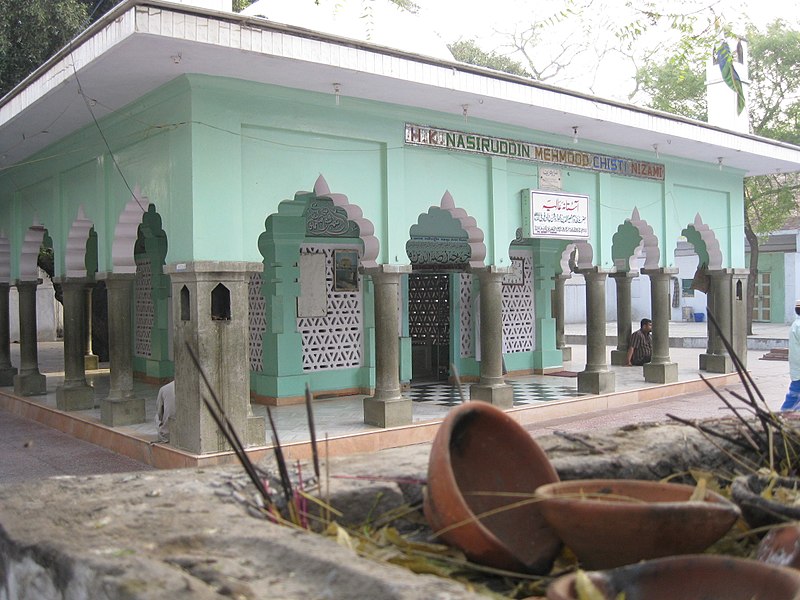
Naseeruddin Chirag-e-Dehlvi’s dargah in Chirag Delhi. Image courtesy Shahab/Wikipedia Creative Commons
For more on the Sufis of Delhi and the artists, writers and poets they inspired, follow us on Instagram

